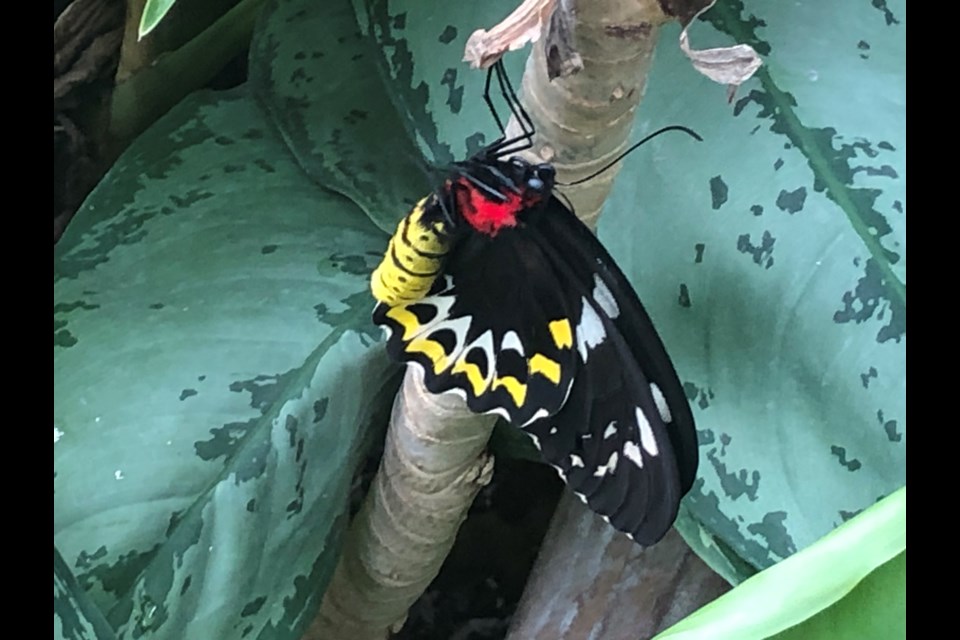The illegal trade of animal industry usually rolls out stories of elephants being hunted for their ivory tusks or tigers killed for their beautiful pelts. At the Butterfly Pavilion in Westminster, researchers and conservationists work to keep illegally traded butterflies safe through education.
Butterfly trafficking is estimated to be a $200 million industry each year, according to Jessica Speart, author of “Winged Obsession” — a non-fiction book that follows a U.S. Fish and Wildlife Service agent as he goes undercover to bust one of the worlds most notorious butterfly traffickers, Yoshi Kojima.
“Invertebrate populations are very decimated by illegal trade,” said Shiran Hershcovich, lepidopterist manager, or self-proclaimed butterfly scientist, at the Butterfly Pavilion.
Combining educational efforts with scientific discovery, Hershcovich and colleague Hannah Weiss, vice president of education and community engagement at the Butterfly Pavilion, helped organize the Beauty of Birdwing event which opens today.
The Common Green Birdwing butterfly — or ornithoptera priamus — is among the largest butterflies in the world with wingspans reaching up to a foot in length. These butterflies are usually found in Indonesia, according to a news release from the Butterfly Pavillion.
The butterflies are shipped, in chrysalis form, to the Butterfly Pavilion from sustainable grow houses in these regions of the world, Hershcovich said.
“Our butterfly providers around the world are conservation partners. They are often doing the work of lobbying for sustainable invertebrate practices around the world, so they are great partners to have,” Hershcovich said.
By displaying these large-winged butterflies in its conservatory, the Butterfly Pavillion is bringing education to the community about the illegal trade of these beautiful invertebrates.
The Beauty of the Birdwing event begins today and will run through the end of the month.
“They are stunning animals. There’s a lot of people who are drawn to that collector’s mentality. Preserved insect collections are a big network. There are a lot of people who can dedicate thousands of dollars to collections … it’s actually a big hobby,” Hershcovich said adding that when it is done through proper avenues it is not that impactful on butterfly populations.
However, illegal traders will collect hundreds to thousands of butterflies at a time it can have a large, adverse impact on wild populations, she added.
The Common Green Birdwing butterfly is one of the few invertebrates protected by CITES, or Convention on International Trade in Endangered Species of Wild Fauna and Flora — which is an international agreement between governments to ensure that international trade of plants and animals does not threaten the survival of the species.
In all its exhibits, the staff at the Butterfly Pavilion encourages patrons to explore their inner scientist by asking questions and exploring alongside the scientists.
According to Weiss, the Butterfly Pavillion is restructuring their way of thinking about education and going as far as changing signs located throughout the building to include critical thinking questions to start conversations.
“How do we get our guests to be at the center of their learning guide them through that discussion,” Weiss asked her team when considering learning opportunities for the Beauty of Birdwings event.
The staff offers a variety of learning options from storytimes for young children to discussions on illegal trafficking to community science opportunities for people of all ages.
The community science opportunities include collecting data for researchers at the Butterfly Pavilion to better understand the natural habits of the invertebrates they study.
“Rather than me telling you what we are doing, you get to help guide the conversation so that each time you visit it is a unique learning opportunity,” Weiss said. “We want to be your learning partner because the joy really is in that journey of discovery.”



